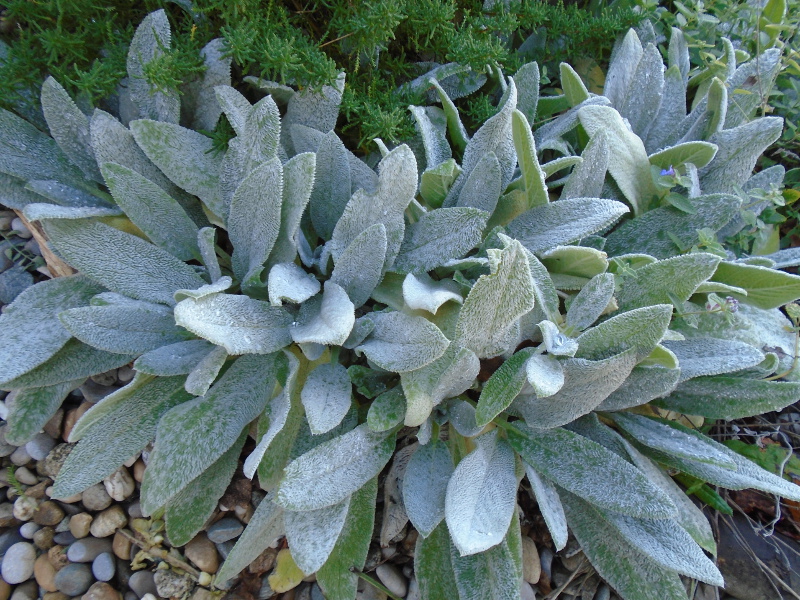Ground cover plants – stachys
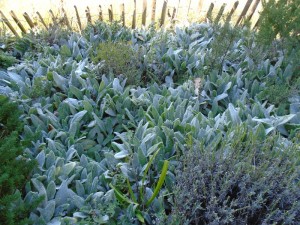 Very, very grey. Soft, gorgeous to stroke, but very, very grey. This is my second (and last) comment on ground cover plants. I have a lot of this stachys byzantina in the barn garden.
Very, very grey. Soft, gorgeous to stroke, but very, very grey. This is my second (and last) comment on ground cover plants. I have a lot of this stachys byzantina in the barn garden.
It was a present from my friend Leslie who was clearing it out of a client’s garden as it had become invasive.
There is a message there. This plant will cover ground. And smother anything in its path. You might know it as lamb’s ears, or even fuzzy wuzzy. This is a native of Caucasus and Iran and the word comes from ‘ear of corn’ in Greek.
And I think it does best at a height where you can stroke it as you go past. Mine, is at ground level and doesn’t give me the tactile thrill it should.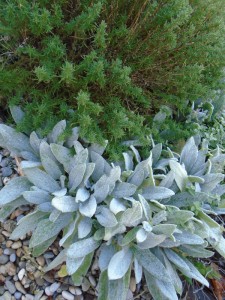
I needed this plant at a time when I was trying to cover soil in a sunny bed that had plenty of different mediterranean plants, but lacked cohesion.
Stachys will do that. But I think it can quickly overhwelm. It is drought tolerant, but it gets tested by the dry weather and tends to look a bit ratty without rain. But it perks up brilliantly and I find you can just pull away the sorry looking crispy bits and it looks much better.
Over the winter I was worried that I might have to weed out the matted dead plants; but come spring, the new growth just shoots up and hides all sins.
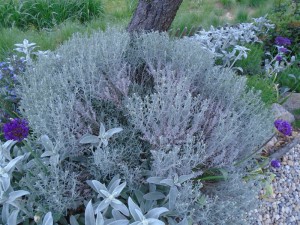 And any plant that means I don’t have to do much weeding or fussing is a winner.
And any plant that means I don’t have to do much weeding or fussing is a winner.
I cut the tall spikes of grey and purple flowers for bouquets in spring. And cut them off if they flop or get battered by a heavy shower of rain.
But the grey is the problem. It clashes with the normal dark green of mediterranean shrubs, and looks too uniformly blah next to the greys of lavenders.
It works if it is contained. And in spring it is at its best. But you have to be ruthless about preventing the spread.
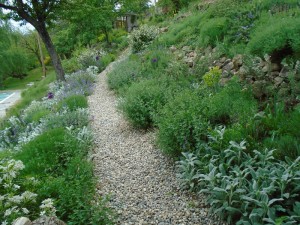 The best place to look for colour combinations is my favouirte go to website; http://www.jardin-sec.com where the photo section shows you the stachys in a garden setting with other plants.
The best place to look for colour combinations is my favouirte go to website; http://www.jardin-sec.com where the photo section shows you the stachys in a garden setting with other plants.
This is the site of Olivier and Clara Filippi who have done brilliant research on plants for a dry garden. They not only give you history of plants but also planting heights, spread, time in flower, position and soil type, but also the useful stuff like hardiness and a drought resistance code which can tell you what to expect from your plants in the dry.
I love it. And one day I will place another order for their incredibly well grown plants. I just need to save my euros first. I have a big bulb order to pay for next week.
